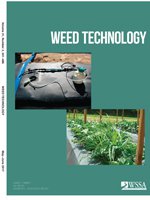Field experiments were conducted to evaluate the integration of cover crops and POST herbicides to control glyphosate-resistant Palmer amaranth in cotton. The winter-annual grasses accumulated the greatest amount of biomass and provided the most Palmer amaranth control. The estimates for the logistic regression would indicate that 1540 kg ha-1 would delay Palmer amaranth emerging and growing to 10 cm by an estimated 16.5 days. The Palmer amaranth that emerged in the cereal rye and wheat cover crop treatments took a longer time to reach 10 cm compared to the hairy vetch and crimson clover treatments. POST herbicides were needed for adequate control of Palmer amaranth. The glufosinate-based weed control system provided greater control (75% vs 31%) of Palmer amaranth than did the glyphosate system. These results indicate that a POST only herbicide weed management system did not provide sufficient control of Palmer amaranth, even when used in conjunction with cover crops that produced a moderate level of biomass. Therefore, future recommendations for GR Palmer amaranth control will include integrating cover crops with PRE herbicides, overlaying residual herbicides in-season, timely POST herbicide applications, and hand weeding in order to achieve season-long control of this pest.
Nomenclature: Glufosinate, glyphosate, Palmer amaranth, Amaranthus palmeri S. Wats., cereal rye, Secale cereale L., cotton, Gossypium hirsutum L., crimson clover, Trifolium incarnatum L., hairy vetch, Vicia villosa Roth., winter wheat, Triticum aestivum L.





